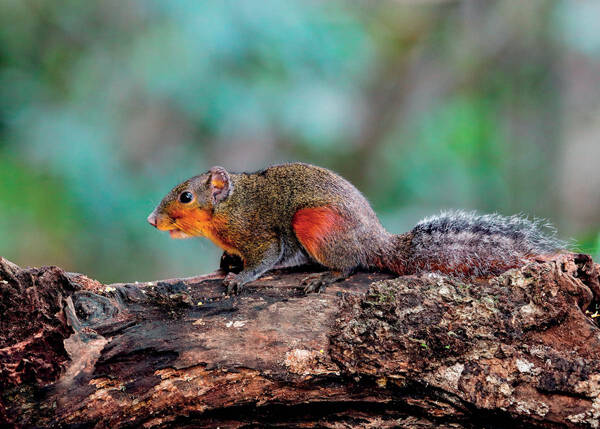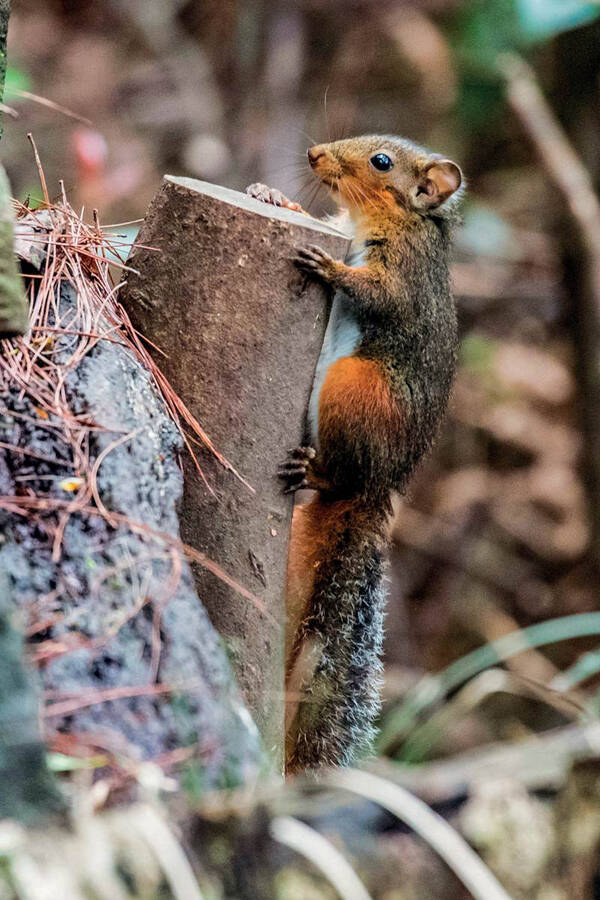Dremomys pyrrhomerus
IUCN
LCBasic Information
Scientific classification
- name:Dremomys pyrrhomerus
- Scientific Name:Dremomys pyrrhomerus,Thomas, 1895
- Outline:Rodents
- Family:Rodentia Sciuridae Sciurus
Vital signs
- length:194-215mm
- Weight:240-295g
- lifetime:
Feature
The snout is longer and tapered. The lateral thighs, buttocks and below the knees are obviously rusty red.
Distribution and Habitat
In China, it is distributed in Sichuan, Guizhou, Chongqing, Hubei, Hainan, Guangxi, Hunan, Guangdong, Fujian and Anhui. Abroad, it is distributed in northern Vietnam.
It lives in subtropical forests at an altitude of about 1,000m, and leads a semi-arboreal life, building nests in rock crevices or tree holes.
Appearance
The entire dorsal surface of the body from the top of the head to the back and the dorsum of the feet is olive black with a blue-gray base. The ventral surface of the body from the chin to the anus is light yellow-white. The cheeks and neck are orange-brown. The spots behind the ears are ochre yellow. The hind legs are a distinct reddish-brown from the outside of the hip to the knee joint.
Details
The red-legged long-nosed squirrel (scientific name: Dremomys pyrrhomerus) is a protected species unique to my country and belongs to the family Sciuridae. It mainly lives in dense forests and has similar living habits to gray squirrels. It likes to be active in the morning and evening. It mainly eats various nuts, such as pine cones, chestnuts and berries. It also eats various leaves, twigs, flower buds, bird eggs, chicks and insects. It can reproduce twice a year, giving birth to 3 to 4 pups each time, with 2 pups being the most common.

The red/red-cheeked long-nosed squirrel (Dremomys rufigenis) has a white belly, red under the tail that can extend to the tail tip, and red or yellowish brown cheeks.
Distributed in southern China, the overall distribution area is southerly than that of Bo, and is not found in the northern subtropics. Near Threatened species.
There are three other long-nosed squirrels:
Red-legged long-nosed squirrel Dremomys pyrrhomerus is distributed in Guizhou, Chongqing, southeastern Sichuan, western Hubei, and Hainan
Orange-bellied long-nosed squirrel Dremomys lokriah is distributed in Nujiang Prefecture, Yunnan, and southern Tibet
Orange-throated long-nosed squirrel Dremomys gularis is distributed in Jianshui, Jingdong, and Luchun, Yunnan









